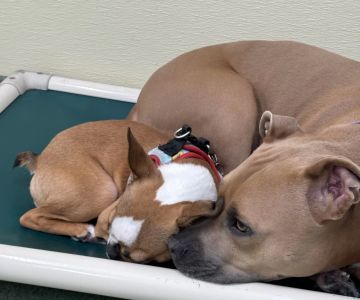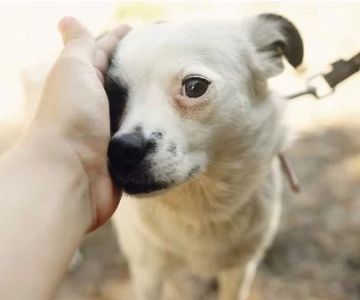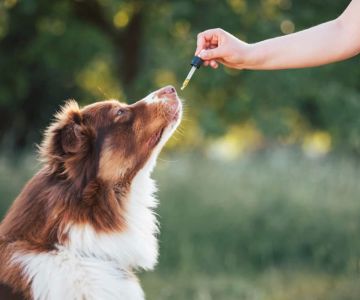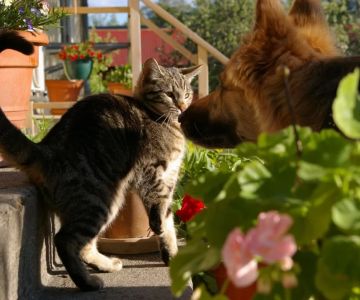Understanding Cat Anxiety Around Other Animals
It's not uncommon for cats to experience anxiety when they are around other animals, whether it’s a new pet in the household or encounters with unfamiliar animals outside. Anxiety in cats can manifest in various forms, from aggression to hiding, and can cause significant distress for both the cat and its owners. Understanding the reasons behind this anxiety is the first step toward helping your cat feel more comfortable.
What Causes Anxiety in Cats Around Other Animals?
Cats are territorial creatures, and they often feel a need to protect their space. When new animals are introduced into their environment, it can trigger feelings of insecurity and stress. This is particularly common when a cat is introduced to another cat, dog, or even smaller pets like rabbits or guinea pigs. In addition, changes in the household, such as moving to a new home or adding a new family member, can increase anxiety in cats.
Signs of Anxiety in Cats
Recognizing the signs of anxiety in cats is essential to addressing the issue early. Some common symptoms include:
- Excessive hiding or avoiding contact with other animals
- Growling, hissing, or swatting when near other animals
- Increased grooming or self-soothing behaviors
- Loss of appetite or changes in eating habits
- Restlessness or pacing around the house
If your cat is showing these behaviors, it’s a sign that their anxiety is likely triggered by the presence of other animals, and it’s important to take steps to help them feel more at ease.
How to Help Your Cat Overcome Anxiety Around Other Animals
Helping a cat cope with anxiety involves creating a safe environment, providing gradual introductions to new animals, and using calming techniques. Here are some practical strategies that can help your cat feel more comfortable.
1. Create a Safe Space for Your Cat
The first step in reducing anxiety is to provide a safe, quiet space where your cat can retreat when they feel overwhelmed. This can be a separate room with their bed, litter box, food, and water. Cats are more likely to relax if they know they have a space they can call their own, away from the new animals in the household.
2. Gradual Introductions
When introducing a new pet into the household, it’s important to do so slowly and carefully. Start by allowing the animals to sniff each other’s scent without direct contact. You can swap bedding or use a soft cloth to rub each animal and then place it with the other, allowing them to get used to each other’s scent. Gradually, you can introduce them in a controlled environment while using a leash or a baby gate to separate them.
3. Use Calming Aids
There are various calming aids available to help reduce anxiety in cats. Products like pheromone diffusers (such as Feliway), calming collars, or natural supplements can promote relaxation. Pheromone diffusers mimic the calming scent that cats naturally produce, helping them feel more secure in their environment.
4. Maintain a Consistent Routine
Cats thrive on routine, and changes in their environment can trigger stress. Maintaining a consistent feeding schedule, playtime routine, and other daily activities can help your cat feel more grounded and secure. This consistency will also help them adapt more easily to new animals or changes in the household.
5. Provide Positive Reinforcement
Reward your cat for calm behavior around other animals. This can include offering treats, petting, or praise when your cat exhibits positive behavior, such as sitting calmly or exploring the presence of another animal without showing signs of aggression or anxiety. Positive reinforcement will help them associate the presence of other animals with good experiences.
Real-Life Example: How One Cat Overcame Anxiety
Take the case of Max, a 5-year-old domestic shorthair who had always been a one-pet household cat. When his owner, Rachel, decided to adopt a second cat, Max became extremely anxious. He would hiss, growl, and refuse to interact with the new cat, named Bella. Rachel decided to give Max his own space and started using a pheromone diffuser to help him relax. She also gradually introduced Max and Bella, starting with short, supervised interactions. Over time, Max began to show signs of acceptance, and now, the two cats get along well and even play together. Rachel’s careful approach to managing Max’s anxiety made a huge difference in his comfort level.
6. Seek Professional Help if Needed
If your cat’s anxiety persists or worsens, it’s important to seek help from a veterinarian or a feline behaviorist. In some cases, anxiety may require professional intervention, including behavioral therapy or medication to help your cat manage their stress.
How to Prevent Future Anxiety Issues
Once your cat has adjusted to the presence of other animals, it’s important to continue monitoring their behavior and maintaining a calm environment. By keeping up with positive reinforcement, providing regular mental stimulation, and ensuring your cat feels safe, you can prevent future anxiety-related problems from arising.
Consistency is Key
When it comes to helping cats with anxiety, consistency is crucial. Keep in mind that every cat is different, and it may take time for your cat to adjust to changes in their environment. Be patient and gentle, and always monitor your cat’s progress. If you encounter challenges along the way, remember that professional help is available to support both you and your pet.












